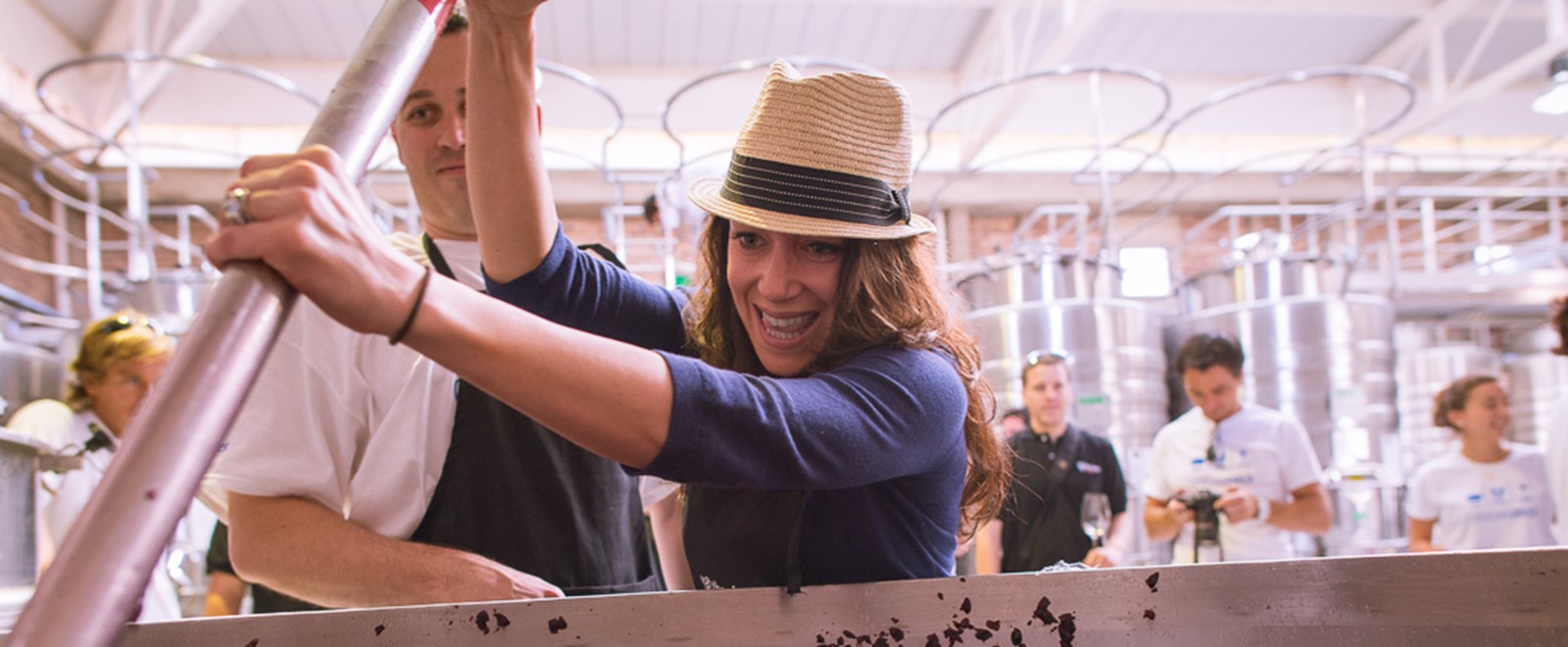Tucked into the folds of the Uco Valley, The Vines Winery is buzzing with activity as the 2013 in Mendoza gains speed. To keep the crowd of International winemakers and private vineyard estate owners in the loop, last week The Vines hosted a conference call to share what can only be called the “state of the harvest address.”
Participating in the conversation, were The Vines' leadership team of Michael Evans and Pablo Gimenez-Riili, plus Santiago Achaval, and Marcelo Pellerriti.
The biggest news on everyone’s lips, aside from Marcelo’s recent 100-point wine, was that the 2013 harvest is successfully underway. Just two weeks ago, the first grape clusters were picked from the vineyard and arrived at the loading dock. “We started with the whites,” said Pablo Gimenez Riili, “first the pinot noir, some merlot, and we’re getting ready for the biggest Malbec harvest in our history.”
When asked how he felt the harvest was coming along, Pablo was all praise for a year of favorable weather and progress: “When we planted our first vineyard in 2007, we were just getting started, and now we have the winery for the fourth year and are getting the grapes from our estate owners, with 500 acres in production and the quality is really, really good.”
But it’s tricky to know exactly what the grapes are capable of so early in the game. After all, this year’s harvest won’t be ready to drink for another year or two at the least. But for Santiago Achaval, there’s something in the air that tells him this year’s grapes are on track.
“I can’t really place my finger on it but there’s something more intense in the smells in the winery this year, something more attractive, something more pleasing. And the flavor of the grapes is outstanding,” he said to the call-in audience.
And maybe he’s right, with favorable weather and lots of development happening within the winery, all signs seem to point to a rico vino at the end of the 2013 growing season.
Though no year is ever perfect, every winemaker on the panel sung praises for the steady heat and calm skies that have kept the vines safe from harm over the last six months.
“Up until 5 days ago, 2013 was a 9, but then it started lengthening with the cold over the last week,” said Santiago, referring to the recent cool stretch that caused skittish natives to bundle up tight and stay indoors. “I’d say we are nicely looking at an 11…my vineyards are performing at the grape stage and at the flavor stage, at a better level than ever.”
But that’s not all thanks to Mendoza’s warm summer days, there have also been lots of developments within the winery and among The Vines of Mendoza team, benefits of tackling what Michael calls a “steep learning curve” in the vineyard.
“Last year we made 200,000 bottles of wine, more than 240 different wines for our private vineyard estate owners, so we have 240 data points, full of different information,” said Michael. Within that data is information about when grapes were harvest, when they went into fermentation, and what the final result was, all of which guides the decisions in the years to come.
“This year we understand the difference between each of the different blocks, and how to drive each block into the direction it needs to go,” said Santiago.
Michael also pointed out that the mere size of The Vines project presents a particular logistical problem when it comes to plucking the grapes from the vines and getting them into safe harbor. “We have 120 blocks of different versions of Malbec,” says Michael, “400 acres of Malbec in all, and we still have to be able to get the grapes in when they’re ready.”
Though Santiago is quick to point out that while the staff will be working around the clock, shuttling grapes from the vineyard to the winery and beginning production, the saving grace is that “not everything comes in at the same time. It depends on the yields of the vineyard and on where the vineyard is located. We have a lot of difference in altitude,” he said, “from one end to the other, east to west,” which comes with a large thermic amplitude, typical of Uco Valley vineyards.
Vineyard yield has also been adjusted this year, shared Santiago, and while production volume will dip, the wines will be higher quality than years past. “We are 2 tons an acre, 3 tons an acre tops. Lower yield means higher quality and faster ripening. It’s like a truck, the same engine is carrying a lighter load and can go quicker,” he said.
While an entire month of harvest lies ahead, the winemakers of the panel agreed with Santiago’s sentiments as he signed off from the call: “We are well on the way to a great, great harvest. We won’t know for sure for a year and a half to two years, but we expect greatness from 2013.”

The Vines of Mendoza
The Vines Harvest 2013 Play-by-Play
·
Next
Loosen your belts...
Previous
The Art of The Vines Asado
